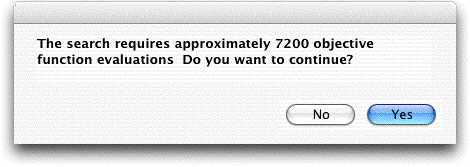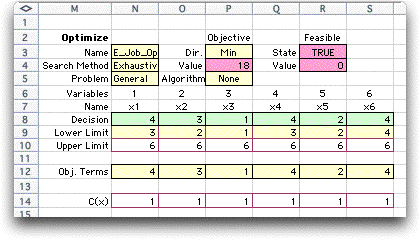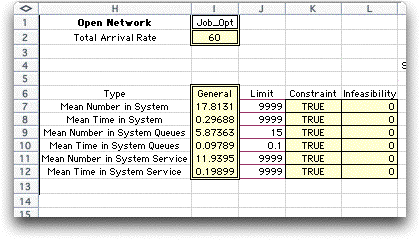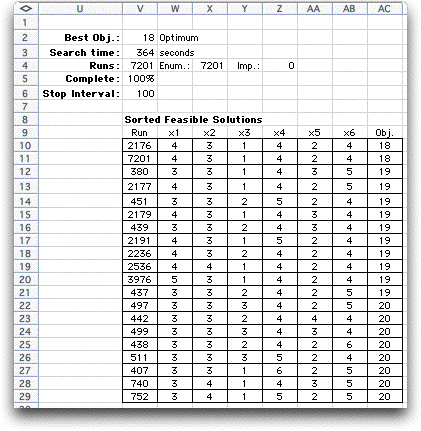| The add-in computes the number
of evaluations required and presents the number in a dialog
with the choice to continue or not.

After some time, the algorithm finally finishes
with the optimum solution shown below. The solution has 18
stations, which is the minimum number of stations that satisfies
the constraints.

The system results for the optimum solution
fall within the limits imposed. Individual station results
are to the left of this display starting in column A. The
demonstration file for this section has the complete worksheet.

To the right of the combinatorial form is a
summary of the time and number of runs required for the optimization.
There is always one extra run because the optimum solution
is repeated. The table below shows the 20 best solutions found.
There is only one solution with 18 servers that satisfies
the constraints, where there are several with 19 and 20.

Although exhaustive enumeration finds the best
solution it takes a long time to find it. The approach is
not practical for larger numbers of variables or greater variable
ranges.
There are a number of heuristic alternatives
that do not guarantee the optimum, but often give good results.
The Greedy algorithm is a general procedure that
changes the variables one at a time. Starting from an initial
solution, the variable that improves the solution the most
is increased of decreased by 1, and the process repeats. The
process terminates when no change of a single variable improves
the solution. We choose Greedy with the Search dialog. |



